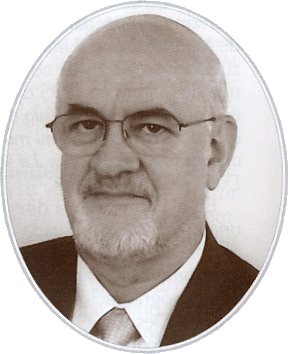
Francisco Asenjo Barbieri / Luis Mariano de
Larra
El barberillo de
Lavapiés
Ópera Cómica de Madrid
(Veranos de la Villa 2007, Jardines de Sabatini, 21
July 2007)
Ignacio Jassa Haro
The great works of lyric theatre are two-edged swords. To face up to them time and time again offers any company an inexhaustible mine of musical and theatrical possibilities with which to construct something good and new; at the same time they run the risk of ridicule for not quarrying the rich vein for all the ore it has. In fact whenever – and wherever – we see a great zarzuela on stage, the sensation we’re left with is usually bittersweet; I think, for example, amongst recent stagings of the new Revoltosa at the Zarzuela, Luisa at the Real, or the Francisquita of last summer’s “Veranos de la Villa”, three productions very different in nature but of indubitable quality. In the case of El barberillo we’ve had quite recently the revival of one of those “gems” that turn up from time to time as authentic exceptions to confirm the general rule: Calixto Bieito’s production for the Teatro de la Zarzuela that Christopher Webber reviewed with such just enthusiasm.
Ópera Cómica de Madrid’s new mounting of Barbieri and Larra’s legendary masterwork naturally awoke a voluble sense of expectancy. Conceived for that singular space, the Sabatini Gardens next to the Palacio de Oriente in Madrid, I think their production was a shining exhibition of eminently theatrical values. The regal residence on the banks of the River Manzanares serves as a backdrop, scenically and for the argument of the work as much as the staging. Thus, we can be thankful than the diaphanous design served merely to heighten the silvery clarity of the imposing Eastern facade of Juvarra and Sacchetti’s imposing building.

The cast was brilliantly led by Enrique Ferrer, who adds to his somewhat tight though expressive tenor the quality of a fine actor. To hear Lamparilla sung in the tenor register defines the role’s comedic quality in contrast with Rossini’s baritone Fígaro: although Barbieri left the barberillo’s vocal type indefinite I’d defend this option stoutly. Carmen González sketched a Paloma with the same talent with which she previously constructed her Marquesita del Bierzo under Bieito. Again here actress and singer work hand in hand to make the music alive and the text resonate. Francesca Calero’s Marquesita was a little rigid theatrically; her lovely vocal colour enhanced the musical numbers, interpreted with exquisite elegance. Juan Lomba completed the leading quartet as a discreet Don Luis, better sung than acted. The other two important vocal roles, Don Pedro and Don Juan, were happily taken by Carmelo Cordón and Elier Muñoz respectively.
Francisco Matilla’s direction, fundamentally based on sensitive verse-text work with the performers, was splendid. The staging rendered the narrative clearly, aided by basic but effective lighting. Nothing has been cut, and the work comes to life through intelligent declamation of the verse dialogue and totally expressive execution of the music. The piece ended with the original finale in tirana rhythm, segueing for the curtain call into the more familiar and popular caleseras alternative.
The visual side contributed little of value, beyond the unmatchable beauty of that palatial backdrop. Excessively colourful costumes contrasted with the stage austerity, inevitably bringing to mind the sense of a Zarzuela Gala Anthology. The company’s chorus and ballet showed their mettle in their contribution to the more visually rich last act. The augmented Ensamble de Madrid played with great inspiration. Lorenzo Ramos conjured out of them a suitable combination of elegance and finesse that – thanks to the unusually trouble-free amplification obtained by the sound engineers of los Veranos de la Villa – shone splendidly. It was a good night for open air singing on the streets of Madrid: in the silences after the applause following each number, we could hear in the nearly Plaza de Oriente the voice of Plácido Domingo, celebrating with a mammoth audience the tenth anniversary of the reopening of the Teatro Real.
© Ignacio Jassa Haro 2007
tr.
Christopher Webber
|
El barberillo de Lavapiés. Music: Francisco Asenjo Barbieri. Text: Luis Mariano de Larra. Cast: Enrique Ferrer (Lamparilla); Carmen González (Paloma); Francesca Calero (Marquesita del Bierzo); Juan Lomba (Don Luis); Carmelo Cordón (Don Pedro); Elier Muñoz (Don Juan); Ballet y Coro de Ópera Cómica de Madrid; Orquesta Ensamble de Madrid; Pedro P. Melendo (lighting); Marcos Berriel (choreography); Luis del Álamo (set design); Mariana Mara (costumes); Francisco Matilla (d.); Francisco Ramos (c.) New production, Ópera Cómica de Madrid |
|
26 August 2007
